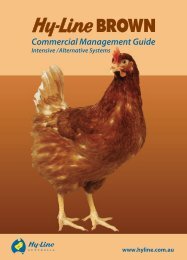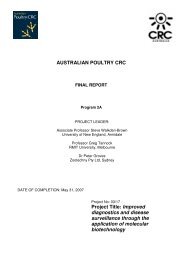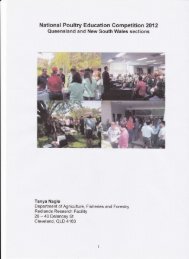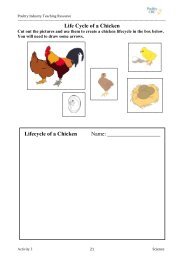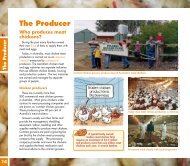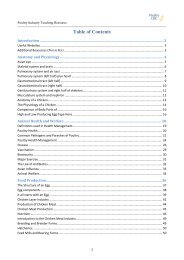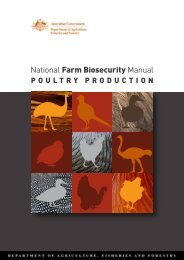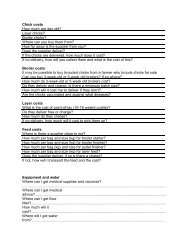Create successful ePaper yourself
Turn your PDF publications into a flip-book with our unique Google optimized e-Paper software.
9.0 Plain English Compendium SummaryProject Title:Project No.: UNE 03-4Researcher:Dr Paul A. IjiOrganisation: University of New EnglandPhone: 02 6773 2082Fax: 02 6773 3922Email:piji@une.edu.auObjectivesBackground The inclusion of antibiotics in poultry diet is under a cloud as diseaseagents have begun to develop resistance to these drugs. There is anintensive search for alternatives to the use of antibiotics around theworld. This project examined two of the strategies that can be employedto the development of alternatives to antibiotic supplements. One ofthese strategies is to include extracts from local Australian and NewZealand plants in the diet, in order to kill or retard the growth of diseaseagents in poultry. Another strategy is to modify the feed in such a way asto improve intestinal growth and function. It was presumed that each ofthese strategies, separately, will be able to improve the health andproductivity of broiler chickens.ResearchIn the first strategy, extracts were obtained from four Australian and NewZealand plants – Rengarenga lily, Cabbage tree, Undaria (seaweed) andAcacia – and included in diets for broiler chickens. These werecompared with an existing antibiotic supplement, Zinc bacitracin andcommercial extracts, marketed by the feed industry. These extracts werepredominantly sugar in composition but there were differences inchemical structures between the plant sources.In the second strategy, the effects of two major grains, sorghum andwheat, were compared, the grains having been milled to fine or coarsetexture, or fed as whole grain. The grains were either hammer-milled orroller-milled. As in the first strategy, the diets were fed and compared tocurrent commercial diets. One of the experiments examined the effectsof feeding such diets under commercial rearing conditions – on the floor,in very large groups.Outcomes The plant extracts changed the composition of intestinalmicrobes, and might improve the health of birds The extracts did not grossly improve feed intake or body growth,when compared to Zinc Bactracin and commercial vegetablesupplements Feeding whole or coarsely milled grains resulted in enlargedgizzards and some changes in the microbial composition of thegut.Implications The plant extracts would be useful in the control of gut microbes, someof which cause disease but not improve body growth further. Thefeeding of whole or coarse grain would result into energy and timesaving, and possibly improve the utilization of feed material.42



